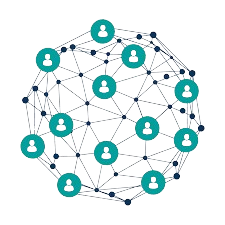CO 197 Denial Code in Medical Billing: A Complete Guide to Prevention, Resolution & Compliance
Running into a CO 197 denial can feel incredibly frustrating especially when you’ve provided the care, documented everything correctly, and still see your claim rejected. This denial usually means one thing: the necessary precertification or prior authorization wasnot in place. And when that happens, the financial burden often falls back on the provider. But here’s the upside: it’s preventable. In this guide, we’ll walk you through everything you need to know about the CO 197 denial code—from what it actually means, to the most common reasons it happens, how to fix it, and most importantly, how to prevent this from happening again. With the right steps, you can protect your revenue and get your claims paid without unnecessary delays.
In medical billing in the U.S. healthcare industry, few things are more frustrating than claim denials especially those that can be prevented. One of the most frequent denials is the CO 197 denial, a denial that occurs when services are provided without prior authorization, precertification, or required notification to the insurance carrier.
This blog post is your definitive guide to understanding, avoiding, and resolving CO 197 denial code descriptions. Whether you are a billing professional, practice manager, or provider, you will learn what you need to do to reduce the risk of denials and improve revenue cycle performance.
BLOG OUTLINE
- What Is the CO 197 Denial?
- Why Does Denial Code CO 197 Happen?
- How Denial Code CO 197 Appears on EOB
- Common Services That Trigger 197 Denials
- Step by Step Guide on How to Fix CO 197 Denials
- Sample Appeal Letter for 197 Denial
- Consequences of Ignoring 197 Denials
- How to Prevent CO 197 Denials
- Top CPT Codes Associated with CO 197 Denials
- How Insurance Payers Differ on Denial Code CO 197
- Best Documentation Practices to Avoid CO 197
- How Technology Can Reduce CO 197 Denials
- Case Study: From 32 CO 197 Denials a Month to Just 3
- Final Thoughts: Turn CO 197 Denials into Opportunities
- Frequently Asked Questions
What Is the CO 197 Denial Code?
What is CO 197 denial code in medical billing?
“The CO 197 denial code indicates that a claim was denied due to missing precertification, authorization, or notification required by the payer. It is categorized under “contractual obligation”, means that the provider cannot bill the patient and must absorb the denied amount. Avoiding CO 197 denials requires verifying insurance, obtaining prior authorization, and following payer guidelines.”
The CO 197 denial code indicates that the required precertification, prior authorization, or insurance notification was not obtained before the service was rendered.
This code is most often triggered when:
- A procedure or service was performed without securing insurance authorization
- Medical necessity was not properly documented
- Notification guidelines by the payer were not followed

Variants of Denial Code 197
There are three denial code types related to 197, depending on how the payer categorizes the adjustment:
- CO 197: Contractual Obligation
- PR 197: When the financial responsibility shifts to the patient
- OA 197: Used for other adjustments but still related to authorization issues
| Code | Description |
|---|---|
| CO 197 | Contractual Obligation – Provider is responsible |
| PR 197 | Patient Responsibility – Patient can be billed |
| OA 197 | Other Adjustment – Neither payer nor patient is liable |
These codes may appear as:
- 197 denial code
- Denial code CO 197
- CO 197 denial code and action
All variants signal the same issue: lack of approval prior to service.
Why Does Denial Code CO 197 Happen?
Here are the most common CO 197 denial code reasons:
🛑 No Prior Authorization or Precertification Obtained
Many high-cost or specialized services—such as imaging, DME, outpatient surgery, or inpatient care—require approval before they’re provided. If the provider fails to get insurance clearance before providing a service that requires precertification, a CO 197 denial is received.
📩 Notification Not Provided
Some payers don’t require formal authorization but do require providers to notify them of services within a certain timeframe—even for emergency services. Failure to submit the notification can lead to a PI 197 or OA 197 denial.
⏰ Late Authorization Submission
Submitting the authorization after the date of service (except in emergencies) will almost always trigger a CO 197 denial code.
🔍 Incorrect Insurance Verification
Eligibility may have been checked, but the authorization requirement was missed due to unfamiliarity with payer rules. Missing or incorrect details during insurance verification can create false assumptions about whether authorization is needed.
📝 Lack of Medical Necessity Documentation
Even if prior authorization was obtained, payers may deny the claim if the documentation does not clearly justify the medical procedure or service.
⚙️ Internal Workflow Gaps in Authorization Handling
When pre-authorization duties are not clearly assigned in a practice, services may be rendered without any verification—then denials like PR 197 become inevitable.
🙋♂️ Patient Misunderstanding
When patients fail to inform the provider about changes in their plan or authorization requirements, CO 197 denials may result unexpectedly.
How CO 197 Denial Code Appears on EOB
When reviewing a claim denial, CO 197 may appear like this on the Explanation of Benefits (EOB):
- Adjustment Code: CO 197
- Description: Precertification/authorization/notification absent
- Remark Code: N290 – Authorization not obtained or MA120 – Missing authorization
Sometimes, multiple codes will combine to provide more context.
Common Medical Services That Trigger Code 197 Denials
These services frequently require prior auth:
- Physical therapy without prior approval
- MRI, CT, and PET scans without notification
- Inpatient admissions without precertification
- Genetic testing without notification
- Durable Medical Equipment (DME) ordered without preauthorization
- Behavioral health sessions exceeding allowed units
- Elective surgeries without verification of benefits
- Telehealth services not documented as authorized
If these aren’t properly authorized, the result is usually denial code CO 197 or its variations.
For Insurance Credentialing, Medical Billing Services and other services
Step by Step Guide on How to Fix CO 197 Denial Code
Resolving a CO 197 denial involves detailed research and proactive communication:
Step 1: Review Payer Policy
Review the EOB for CO 197 and any attached remark codes. Verify the service’s authorization requirement with the payer’s policy manual or portal. This determines if the denial was valid.
Step 2: Gather All Documentation
Documents should include the following:
- Physician order form
- clinical notes
- Treatment plans
- Medical records
- Proof of medical necessity
Step 3: Contact the Payer
Ask the insurance provider:
- What triggered the CO 197 denial reason?
- Is retro-authorization or reconsideration is possible?
Step 4: File an Appeal
Write a formal appeal that includes documentation and reason as to why the authorization was not obtained, justify the medical necessity of the service including timeline and clinical urgency. Submit appeal with all documentation and track its progress.
Step 5: Monitor Progress
Track appeal status in your RCM system and follow up regularly.
Sample Appeal Letter for CO 197 Denial
Subject: Appeal for Denial Code CO 197 – Authorization Not Obtained
Dear [Insurance Company],
We are appealing claim #[claim number] for [Patient Name] denied under CO 197. At the time of service, the necessity for authorization was miscommunicated. Enclosed are supporting documents. We respectfully request reconsideration.
Sincerely,
[Your Name & Practice Name]
Consequences of Ignoring 197 Denials
- Lost revenue (especially under contractual obligation)
- Decline in first-pass claim rate and lower clean claim rate
- Risk of audit and compliance issues
- Tarnished provider reputation with payers
How to Prevent CO 197 Denials
Here are the most common CO 197 denial code reasons:
Build a Pre-Authorization Matrix by Payer
Know which CPT codes require authorization under each payer. Educate front-desk and billing teams about payer-specific rules.
Real-Time Eligibility & Benefits Verification
Avoid OA 197 denial by verifying the latest payer rules in real time. Use tools that check insurance coverage and required authorizations before scheduling.
Designate a Pre-Authorization Specialist
Assign one or more staff members to handle all prior authorization requests. Maintain an internal checklist of services that typically require prior approval by payer. Keep records of authorization reference numbers, who you spoke to, and date/time.
Educate Patients
Patient confusion leads to PR 197 denial reasons. Provide coverage guides and checklists.
Run CO 197 Denial Code Audits
Regularly analyze CO 197 denial and action trends. Monitor denial trends and fix recurring workflow issues.
Top CPT Codes Associated with CO 197 Denials
| CPT Code | Description |
|---|---|
| 97110 | Therapeutic exercises |
| 99214 | Established patient visit |
| 74177 | CT scan, abdomen and pelvis |
| 99381 | Initial preventive exam |
| 36415 | Blood collection by venipuncture |
These codes frequently require prior authorization depending on the payer.
How Insurance Payers Differ on Denial Code CO 197
Medicare
Minimal prior authorization requirements; denials are rare unless policy is violated.
Aetna
Strict with imaging and behavioral health services. Often issues OA 197 denial descriptions.
Blue Cross Blue Shield
Requires notification for elective surgeries and therapy.
UnitedHealthcare
Known for automation tools, but still denies for missing notification.
Best Practices to Avoid CO 197 Denial Code
📌 Include diagnosis codes that prove medical necessity
📌Use templates that align with payer expectations
📌Document patient history, duration of symptoms, and attempted alternatives
How Technology Can Reduce CO 197 Denials
Here are the most common CO 197 denial code reasons:
Predictive Denial Prevention
RCM platforms use machine learning to flag high-risk claims before submission.
Robotic Process Automation (RPA)
Bots can automate repetitive tasks like logging into payer portals to request authorization.
Blockchain Integration
Ensures secure, trackable, and transparent prior authorization processes.
AI-Powered Documentation Review
AI tools (e.g., Smartsheet, Aidoc) can scan clinical notes to ensure proper justification before claim submission.
EHR-Payer Interoperability
Direct connections between your EHR and payer APIs streamline approvals and reduce paperwork errors.


Case Study: From 32 CO 197 Denials a Month to Just 3
A multi-specialty mental health focused clinic in Texas with its billing outsourced to MedStates reduced CO 197 denials by:
- Training staff on top 10 CPT codes requiring prior auth
- Implementing real-time eligibility tools
- Creating a 3-person pre-certification team
Result: Monthly denial rate fell by 91% in just three months.
Final Thoughts: Turn CO 197 Denials into Opportunities
CO 197 may be one of the most frustrating denial codes in medical billing—but it’s also highly preventable. With the right tools, training, and workflows in place, your practice can reduce these denials dramatically and improve overall revenue cycle performance.
Don’t treat denials as just another task—treat them as data. They reveal what’s broken in your billing system and where improvements will have the biggest payoff. By mastering denial code management—especially CO 197—you’ll be taking a big step toward a cleaner, more profitable claim cycle.


